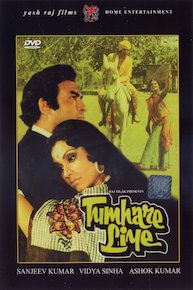
The Sleeping Beauty
Where to Watch The Sleeping Beauty

The Sleeping Beauty is a film that combines the poetry of ballet with timeless storytelling. Released in 1959, this film stars the unparalleled dancers - Margot Fonteyn and Michael Somes. With its transformative narrative, sumptuous visuals, and riveting performance, it ensures an enchanting journey into the world of ballet.
This production of "The Sleeping Beauty" is a film adaptation of Marius Petipa's infamous ballet. Choreographed by the legendary Sir Frederick Ashton, director of the Royal Ballet, the film offers an ornate balletic spectacle set against Tchaikovsky’s exuberant musical score. Steered by the superb performances of Margot Fonteyn as Princess Aurora and Michael Somes as Prince Florimund, the film takes the audience on a dazzling, dream-like journey.
The story begins with the birth of Princess Aurora and the curse laid upon her by the wicked fairy Carabosse. Carabosse is portrayed by Frederick Ashton, adding an interesting dimension to his role as a choreographer. The curse decrees that on her sixteenth birthday, Aurora will prick her finger and die. However, the Lilac Fairy softens the curse, saying the princess will not die but only fall into a deep sleep until she's awakened by true love's kiss. This sets the stage for a mesmerizing tale of magic, love, and destiny.
Fonteyn, as Aurora, provides a stunning example of the artistic and technical prowess that established her as one of the greatest dancers of her time. She flawlessly progresses from naivety and innocence, reflective of her character’s age and experience, into a noble regality befitting her later stature in the story. From the exuberance of the Rose Adagio to the ethereal beauty of her final pas de deux, Fonteyn’s performance is a masterful display of virtuosity woven with genuine emotion.
Michael Somes, a stalwart partner to Fonteyn throughout their illustrious careers, offers a nuanced and commanding performance as Prince Florimund. Despite having less stage time, Florimund’s character has significant narrative importance, and Somes executes this role with a fine balance of strength and tenderness. From his reflective solo in the hunting scene to the climax's romantic pas de deux, Somes embodies the soulful, heroic prince with captivating grace and humility.
The awe-inspiring performances by the leads are mirrored by an equally mesmerizing corps de ballet and supporting cast. The ensemble adds to the spectacle, gracefully moving as a single entity across lush, detailed sets. The costumes, reflecting the grandeur of the late Edwardian period, are impeccably designed and beautifully complement the dreamlike aesthetic of the film.
The film takes full advantage of the genre's cinematic potential with deft camera work amplifying the dramatic intensity of the ballet. Of particular note are the well-executed overhead shots that offer a bird's-eye view of the intricate formations, something not generally afforded to a ballet audience.
The colorful and dramatic score by Tchaikovsky provides a rich tapestry of sound that beautifully accentuates the dancers' striking movements and the story's unfolding drama. It is an integral component of the entire production, carrying the narrative seamlessly from one act to another and enhancing the enjoyment of the ballet for both seasoned connoisseurs and new audiences alike.
"The Sleeping Beauty" introduces ballet to a wider cinematic audience, beautifully captured by the director’s innovative approach and the breathtaking performances of its lead actors. This film offers a captivating experience for all who appreciate the artistry of ballet, cinematic brilliance, and timeless storytelling.
The Sleeping Beauty is a Art House & International movie released in 1955. It has a runtime of 66 min. Critics and viewers have rated it no reviews, with an IMDb score of 0.0..
























